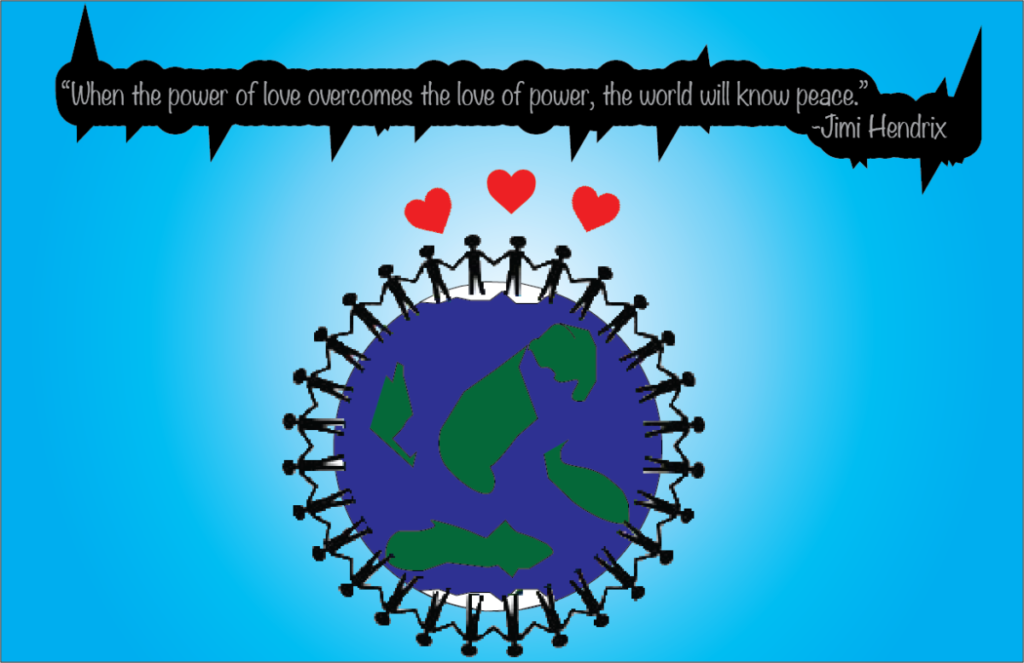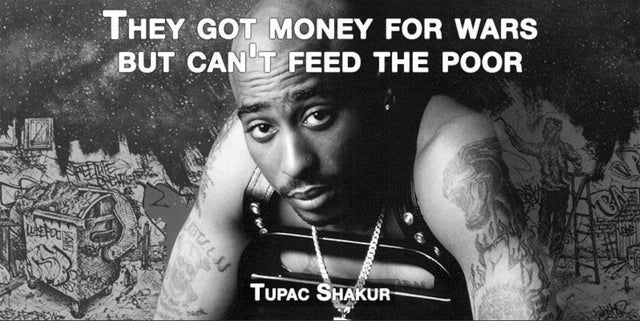I sent in my first project for my internship which was the video reel I had to put together. My supervisor asked me to revise it in addition to adding some extra detail in the end.
First Project – The Start
This week, I worked on my first assignment for Rain River images. My supervisor and I communicated primarily through Slack and text. He sent me numerous files from a photo/video shoot he did of cosplayers that were dressed as characters from Fallout. I was told to create a 30-second video for Instagram using the photos and b-roll footage with music and the company’s logo animated. I was given complete creative freedom. I put together a video I thought was very good. I am using After Effects to try different ways to animate the logo.
My Portfolio
Quote Poster

Inspirational Quotes




Banksy video reflection
I definitely think Banksy is a real artist and a great one too. He’s unique like every artist is. His art has a lot of meaning to it; they’re often depictions of real life topics that can start a discussion. A major thing about Banksy is that he is anonymous so he doesn’t want to be recognized. He seems humble in a world where popularity equates to value in an age of commodification. From spraying graffiti to painting a train, it’s safe to say that Banksy’s work has evolved. There’s a great irony with Banksy’s work. Like how every institution he criticizes loves his art. He condemns galleries yet they profit and sell his work for millions. He has this perception of the world of art where exhibits and art auctions where art is sold repulse him. He even had a shredder of some sort that would destroy his own work if removed from its frame at an auction. He seems more keen on his art making points than being sold for its value, which resonates with me. I was very intrigued by the video and really got a grasp on this type of art, how sentimental it really is, and how people view it.
Motion Designer Michael Wiehart’s Interview
Michael Wiehart is a self-taught and self-employed motion designer and animator. He went to art school in Switzerland where he learned graphic design. He had to make his own computer back then. He is a hard-working individual who is always eager to learn more. He spends many hours working on projects for clients, brands, and companies as well as doing side projects. He’s done design, editing, 3D and 2D animation, compositing, and live action direction. He mostly does advertising. His field is combined graphic design and live action. He also does live action where he adds animation after. He also does other things. He uses Cinema 4D as a 3D software if he does 3D animation, AfterEffects for motion graphics and compositing, Unity, renderers, and Premiere because they’re nicely connected which makes it easier. He also uses the rest of Adobe. He’s done work for big name projects like Disney’s Sorcerer’s Arena. Although he hires freelancers, most of the time, he does everything by himself. Michael really likes what he does and is always putting in the work while sporting a positive attitude. He’ll even rewrite a project brief if he feels it’s not what the client/brand wants. He also makes connections with people as that helps.
I learned many facts/tips from Michael Wiehart: He relayed that in regards to the industry, it’s always changing. Perfect your craft. If you are going to charge money for your craft, you better be good at it or you’re cheating your client. Partake in side projects and challenge yourself. It teaches you things in addition to what you learn from your work projects. Don’t be afraid of putting in the work. To learn and get good, you must be excited about it and want to spend the time to do it. Time is valuable so use it wisely. The industry is a team sport and everyone does their own thing. You may be good at something but not something else. So many different ways of doing things. Everyone does it differently. Do what you want as well as what you must.
Artists Biography
I like Alex Ross’ art because I am a big fan of Marvel and the art that he does for the company as well as non-Marvel. His art looks very realistic compared to art done by other comic artists. Far from the simpler, cartoony art from decades ago, he still pays tribute to those artists with their original character designs present in his work.
I like Banksy’s art because not only does it look good but it has serious meaning to it. The art that I’ve seen is very profound, addresses real issues that people face which gives it that touch with reality. I also admire Banksy’s intentions and drive for making their art in a world where people price and collect it.
I really like Pawel Kuczynski’s art because of it’s meaningful nature and powerful messages that are displayed in my mind upon seeing the art. It’s very thought-evoking and that makes me enjoy staring at it even more.
Brand Timeline
Three of Federal Express’ Logos used throughout their history
FedEx is an American mail-delivering company. The origin goes back to 1965 when a Yale undergraduate named Frederick W. Smith wrote a term paper that laid out the logistical challenges facing pioneering firms in the information technology industry. In the paper, he proposed a system specifically made to accommodate time-sensitive shipments. In 1971, Smith started the idea of a company that would make it easier to deliver items. Smith named the new company Federal Express because he believed the patriotic meaning of the word federal suggested a nationwide interest in economic activity.
FedEx founder Frederick W. Smith
- April 17, 1973: After moving to Memphis, Tennessee to set up operations, Federal Express officially began operations.
- July, 1975: Their first profit was made. They set the standard for the express shipping industry it established. In the mid-1970s, the company led lobbying for air cargo deregulation, which was legislated in 1977. These changes allowed the company to use larger aircraft and helped with their growth. By the 1980s, Federal Express had been well established. Their growth rate was compounding at about 40% annually. This also meant that there were competitors trying to catch up. In fiscal year 1983, Federal Express reported one billion dollars in revenues, making American business history as the first company to reach that financial hallmark inside ten years of startup, free of mergers or acquisitions.
- 1984: Following their first acquisition, intercontinental operations began with service to Europe and Asia. The next year, Federal Express marked their first regular scheduled flight to Europe.
- 1988: The company initiated direct-scheduled cargo service to Japan.
- February 1989: Federal Express acquired Tiger International Inc. When integrating the Flying Tigers network on August 7, 1989, Federal Express became the world’s largest full-service, all-cargo airline. This acquisition included routes to 21 different countries, a fleet of Boeing 747s and 727s, facilities throughout the world, and Tigers’ expertise in international airfreight.
- 1994: Federal Express shortened their official name to “FedEx.”
- 1995: they were authorized to serve China through an acquisition from Evergreen International Airlines. Under this authority, it became the sole U.S.-based, all-cargo carrier with aviation rights to the world’s most populous nation. Its global reach has continued to expand into what is now an unsurpassed network, delivering to customers in more than 220 countries and territories.
- January 1998: FDX Corp., later changed to FedEx Corp., was formed after they acquired Caliber System Inc. They built on their express delivery service to create a more diversified corporation of different but related differences. Entering the new millennium, FedEx formed a new subsidiary named FedEx Corporate Services Inc. This created the process of transforming its technology and delivery services into a portfolio of shipping and business solutions.
- February 2004: FedEx acquired privately held Kinko’s Inc. and rebranded it as FedEx Kinko’s before again rebranding it as FedEx office in 2008.
- September 2004: FedEx acquired Parcel Direct, a leading parcel consolidator that it later rebranded as FedEx Ground Economy (formerly FedEx SmartPost). This acquisition complemented a FedEx alliance with the U.S. Postal Service, providing customers in the e-commerce and catalog segments with a proven, cost-effective solution for low-weight, less time-sensitive residential shipments.
Video Project: Pitch/Screenplay/Video
Pitch:
I will include pictures and/or videos taken of Chris and or then into a compilation on Adobe Premiere.
I’ll start with a short clip of him introducing himself. After this, I will include the pictures I have of him watching football on the computer (he likes sports), him with his Metallica hoodie (he likes music), him playing video games (he likes video games and technology). Maybe I’ll include some foods he likes as well.
I will include some words (maybe stylized typography) to accompany the imagery for some details. If I can, I’ll include some music.
Video:


